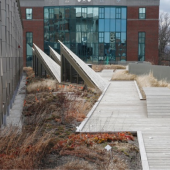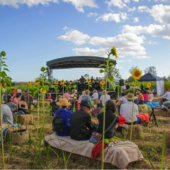Reynolds (2004) says we write from where we are (p. 53). What does that mean? In a class called Composing our City, place, place-based learning, and place-based projects were the sustainable modus operandi. We wrote, thought, and created where we are from. As we engaged in place-based learning, we touched on topics like the emotions places evoke, how environments come with a sense of place, learning the art of flaneurism, and how crossing borders in our assignments teaches us aspects about our environments and ourselves we could not learn otherwise. Flaneurism was our method of collecting data and the object of our writing, as we explored, described, and discovered where we are from.
Continue Reading
Abstract: Higher education campuses play an important role in developing visionary models of sustainability that integrate campus facilities, student learning, and research. We reflect on a series of visits to campuses within New York state utilizing systems thinking analysis of sustainable initiatives finding interconnections between buildings, pedagogy, and campus life. Campus infrastructure-systems, curriculum, and campus actors present agentic interconnections that contribute to teaching the campus community about sustainable systems. Our journey presents three big ideas for conceptualizing our encounters: wayfinding, defining occupancy, and implementing a vision that articulate how campus spaces and green infrastructures exert agency in teaching us about sustainable living. These big ideas are explored to conceptualize and reflect on our role as art and design faculty to use our workplace and hence campus life as a context within which to speculate on sustainable living.
Continue Reading
Abstract: Solutions to environmentally damaging human practices require cooperation between many different communities. This article explores sustainability-focused education through the lens of a current work-in-progress, Sugar vs the Reef?, which involves collaboration between sugarcane farmers and artists in the arable catchment of the Great Barrier Reef in North Queensland. This is a socially engaged art project that is addressing the fraught relationship between the region’s agriculture and the fragile ecology of the Reef. We introduce some of the specific aspects of socially engaged art (SEA) which commend it as a cross-disciplinary method for bridging diverse individuals and organisations – in particular, the notion of a “holding environment” for complex socio-ecological situations. We consider how this approach might broaden the agricultural practice of “extension” which aims to transform farming through educational outreach. Ideas emerging from contemporary socially engaged art practice may contribute to a toolkit for researchers and practitioners within and beyond the academy who are searching for ways to overcome the limitations of current methodologies and movements for social change.
Continue Reading